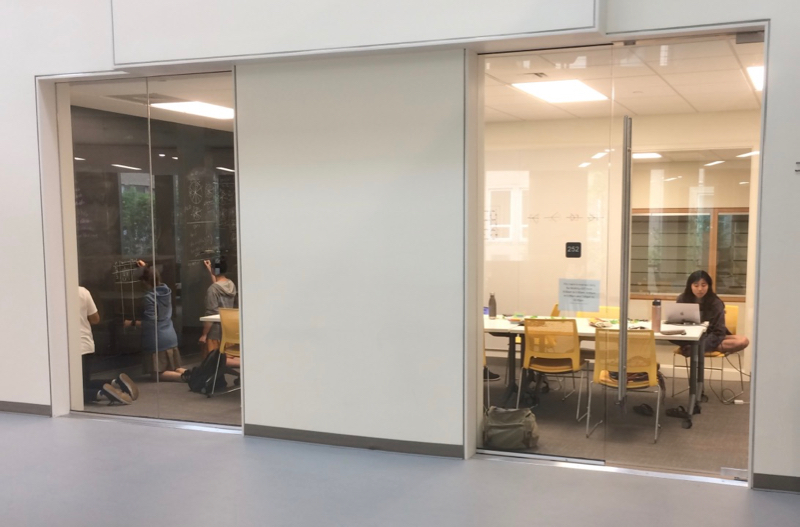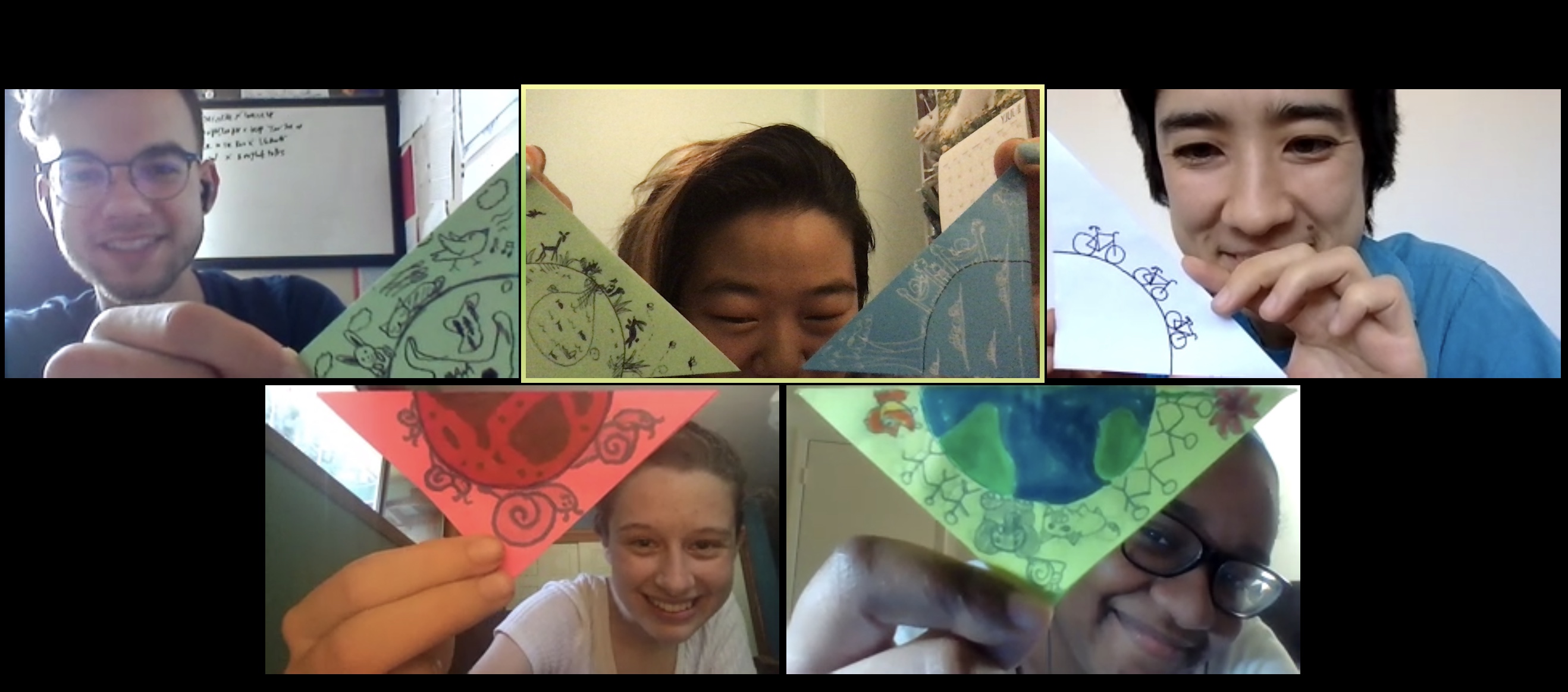
Who: Four early college students who are deeply but perhaps informally prepared
for mathematics research.
What: Eight weeks of mathematical research on combinatorial representation theory. More details.
When:
June 8th - Aug 2nd, 2025 (8 weeks).
Where: Bryn Mawr College, alongside the participants in the
MathILy summer program. More details.
Why: Because students who are prepared for research should have
the opportunity to do it.

The application process: Consists of personal information, information about your mathematical
studies, a multi-question personal statement, and two recommendations (instructions will be sent to recommenders when you submit the aforementioned information), all of which must be received by April 2, 2025. More details.
Stipend: $3600, plus on-campus housing and meals while at
Bryn Mawr.
MathILy-EST 2025 is funded by the National Science Foundation and by Jane Street.
Research Description: In 2025 the MathILy-EST topic will be combinatorial representation theory, under the direction of Dr. Joshua Mundinger.
Combinatorics is the mathematics of counting. Often, objects we wish to count come with additional symmetry. Representation theory is the study of symmetries through linear algebra. Our projects will rely on the mutually beneficial relationship between combinatorics and representation theory: Representation theory can help combinatorics by turning a problem about sets into a problem about vector spaces, which are more flexible than sets; in turn, problems in representation theory may have answers in terms of nice combinatorial objects.
Here is how representation theory converts symmetries into linear algebra: If a set \(X\) has symmetries that form a group \(G\), the action of performing a symmetry on \(X\) can be described by a function \(G \times X \to X\). Then, a representation of \(G\) is a vector space \(V\) and such a function \(G \times V \to V\) such that \(g(v)\) is linear.
This summer, we will study combinatorics and representations associated to finite Coxeter groups. Coxeter groups are groups of symmetries of a vector space generated by reflections. For example, the group of permutations on three letters, \(S_3\), can be generated by reflections across the three lines shown in Figure 1. Each reflection corresponds to switching two letters. We write a permutation as disjoint cycles, where each cycle tracks how an element moves through the permutation; for example, \( (13)(2)\) means that the first and third elements switch places and the second element stays in its place.

Figure 1. Reflections across these lines generate \(S_3\); black permutations act on pink lists of numbers.

Figure 2. A Dyck path, traveling from corner to corner of an \(8\times 8\) grid staying above the diagonal, and corresponding non-crossing partition of the set \(\{1,2,\dots,8\}\). Their common permutation is \( (145)(23)(78)\).
A classic sequence in combinatorics is the Catalan numbers \(1, 2, 5, 14, 42,\dots\). There are at least \(214\) different kinds of objects all counted by the Catalan numbers, such as Dyck paths of length \(2n\) and noncrossing partitions of a set of size \(n\), both shown in Figure 2. It turns out that these Catalan objects are associated to the symmetric groups \(S_n:\) for example, each cell of a noncrossing partition corresponds to a cycle of a permutation (see again the example in Figure 2).
Amazingly, there are also Coxeter-Catalan objects associated to other Coxeter groups. We know lots about Catalan objects for the symmetric group, but comparatively less about Coxeter-Catalan objects. The known Coxeter-Catalan objects fall into two categories: nonnesting and noncrossing. Dyck paths are a nonnesting Catalan object, while noncrossing partitions are (surprise!) a noncrossing Catalan object. One question for this summer is: of those 214 known Catalan objects, which generalize to Coxeter-Catalan objects? Can we find new bijections between different Coxeter-Catalan objects? The Coxeter-Catalan objects can be interpreted in terms of representation theory, so we'll learn about representation theory to answer these questions.
Here's another place where combinatorics and representation theory meet. Instead of counting a single object, we can count several objects at once. A combinatorial species is a sequence of sets \(F_n\) labeled with \(\{1, 2, \dots, n\}\) where elements of \(S_n\), which are permutations, act by permuting the labels of \(F_n\). Part of an example is shown in Figure 3. On the combinatorics side, a combinatorial species has an associated generating function \(F(x) = \sum_{n \geq 1}|F_n|/n!\), which counts elements in \(F_n\) weighted by their symmetries. Many, but not all, operations of generating functions have analogous operations on combinatorial species. For example, under what conditions does the inverse function \(F^{-1}(x)\) count something? On the representation-theory side, we can use algebra and computer experimentation on a combinatorial species to study representations of \(S_n\).

Figure 3. Two members of the species of vertebrates (labeled trees with marked head and tail).
Combinatorial representation theory is a rich area with connections to many other parts of mathematics, and it deals with many concrete and beautiful objects (Catalan numbers, permutations,...). This summer, we'll get our hands on some of this great mathematics.
Research Mentor: Dr. Joshua Mundinger is a Van Vleck visiting assistant professor at University of Wisconsin-Madison in Madison, WI. As an undergraduate, he participated in the SUNY Potsdam REU and several other undergraduate research projects. In 2022 he was an assistant mentor at MathILy-EST, guiding students in combinatorial representation theory. His research also involves algebraic geometry. In his spare time, he enjoys playing the piano.
Goals and Expectations: During the summer, each of the participants will be expected to...

Blackboards, whiteboards, glass... we have it all.
Prerequisites: Applicants must be undergraduates in good standing. Preference will be given to first-year college students, with second-year and entering college students also considered for participation. NSF funding requires that participants must be US citizens or permanent residents.
Transitioning into Research: MathILy-EST participants will have little-to-no formal experience with mathematics research. To ease participants into the work they will be doing, the program will start with the research mentor providing an overview of the project that includes pointers to literature and concrete examples that are associated with questions to investigate. Participants will be assigned sets of readings that they then must present to one another, as well as hands-on explorations so that they can familiarize themselves with relevant examples and generate data as a start to working on open problems.
The weekly record of progress that participants are expected to keep will provide practice in writing formally and building in time for detailed feedback and revisions of writing. In addition, it will provide fodder for paper drafts once research has progressed to the point of publication, and regular presentations on research progress will provide participants with feedback on their research methods and presentation skills.

Professional development for MathILy-EST participants will include...
MathILy and MathILy-EST: The MathILy-EST REU will overlap with the MathILy summer program. The two programs share space---MathILy-EST participants will stay in the same dorms as MathILy students and instructors, and have work space in the same building as the MathILy classrooms---which will provide plenty of opportunities for social interactions, from casual mathematical conversations in the public areas of the dorm room to afternoon frisbee, board, and card games, to the annual Philadelphia trip.

After the Program: At the end of MathILy-EST, the research mentor will help participants put together plans for presenting their research at local and national conferences, and will check in regularly during the following semesters to make sure they're keeping to a reasonable timeline for preparing publications and conference presentations. In addition, MathILy-EST participants will be invited to the {MathILy, MathILy-Er, MathILy-EST} Yearly Gather at the Joint Mathematics Meetings, which will provide a chance to catch up with their fellow participants and to network with participants from other years and programs.
Why Bryn Mawr is an awesome
place to be in the summer:
The dorms are really nice, and have air conditioning. (So do the classrooms.)
You will have a single room.
The campus is beautiful...really beautiful. (video!) And very safe!
The food is excellent. (Still, if
you suddenly need pizza or snacks, there are pizza places and a
grocery store near campus.)
Laundry is free.
Campus is also right near a hospital, shopping center,
etc.
Philadelphia, which has tons to offer---including art and science and medicine and natural history museums, a zoo, shopping malls, a public market (both ingredients and prepared foods), the Italian
Market, the Declaration
of Independence (yes, the real
thing), the Liberty
Bell, and about a zillion other things---is a short train ride away.

Practical stuff: We'll give you all the details after you've applied and if you are admitted.
If after reading this whole page you still have questions, please do contact us at .
MathILy, MathILy-Er, and MathILy-EST are projects of the nonprofit organization Mathematical Staircase, Inc..